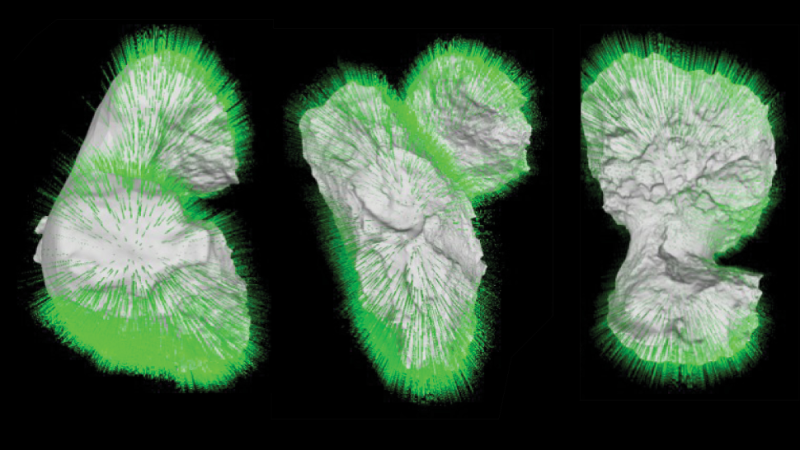-
Tips for becoming a good boxer - November 6, 2020
-
7 expert tips for making your hens night a memorable one - November 6, 2020
-
5 reasons to host your Christmas party on a cruise boat - November 6, 2020
-
What to do when you’re charged with a crime - November 6, 2020
-
Should you get one or multiple dogs? Here’s all you need to know - November 3, 2020
-
A Guide: How to Build Your Very Own Magic Mirror - February 14, 2019
-
Our Top Inspirational Baseball Stars - November 24, 2018
-
Five Tech Tools That Will Help You Turn Your Blog into a Business - November 24, 2018
-
How to Indulge on Vacation without Expanding Your Waist - November 9, 2018
-
5 Strategies for Businesses to Appeal to Today’s Increasingly Mobile-Crazed Customers - November 9, 2018
Scientists Now Have an Answer for Comet 67P’s Odd Shape
Researchers have now concluded that the comet 67P Churyumov-Gerasimenko was probably formed when two separate objects collided during the early stages of the solar system, according to a paper published Monday in the journal Nature. Indeed, scientists are saying, “Two independent and primitive envelopes of the bilobate nucleus of comet 67P”. One with the comet as a single body with a center of mass near the ‘neck.’ The other one with two separate comets, with each having its own center of mass.
Advertisement
“Our analysis… clearly shows that the layers of the body and the head of the comet are not related”, Massironi said.
Comet 67P/Churyumov-Gerasimenko’s quirky double-lobed form left scientists scratching their heads ever since the ancient cosmic traveller first came into the Rosetta spacecraft’s viewfinder past year.
In the year and change since the European Space Agency’s Rosetta mission became the first spacecraft to orbit a comet, the probe has made all sorts of discoveries about the object known as Comet 67P/Churyumov-Gerasimenko-for instance, that it’s bumpy, not smooth as expected, and is covered in dark, carbon-rich compounds with surprisingly little ice.
“This result adds to our growing knowledge of the comet – how it formed and its evolution”, Rosetta project scientist Matt Taylor said.
“These two bodies should have collied very slowly and merged very slowly otherwise we would not have this ordered (onion-like) structure”, team member Matteo Massironi said in a webcast press briefing on Monday. Scientists say that some of these layers are up to 650 meters (2,130 feet) thick and independent of the layers on the smaller lobe.
Either the odd shape was due to localized erosion on the surface of Comet 67P/Churyumov-Gerasimenko or possibly the merger of two comets.
Merger occurred during formation of the solar system.
A 3D shape model was created to figure out which directions the material and more than 100 identified terraces were sloping.
The mission was conceived to unravel the mysteries of comets, which many scientists believe “seeded” early Earth with some of the ingredients for life.
“Rosetta will continue to observe the comet for another year, to get the maximum amount of information on this celestial body and its place in the history of our solar system”, he said.
Advertisement
“Our results may provide an important clue on how the planets and the comets formed, and in the latter case where”.




























